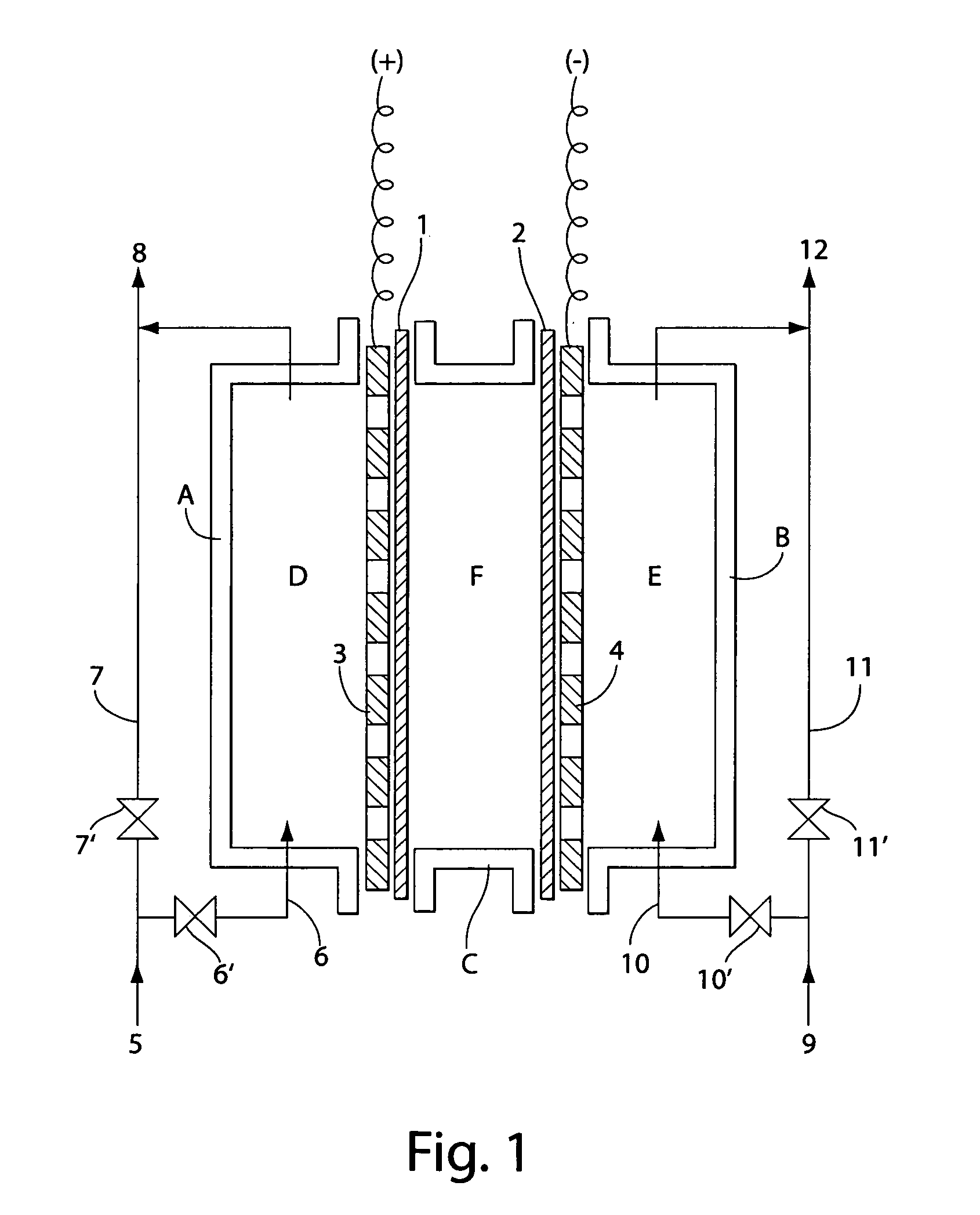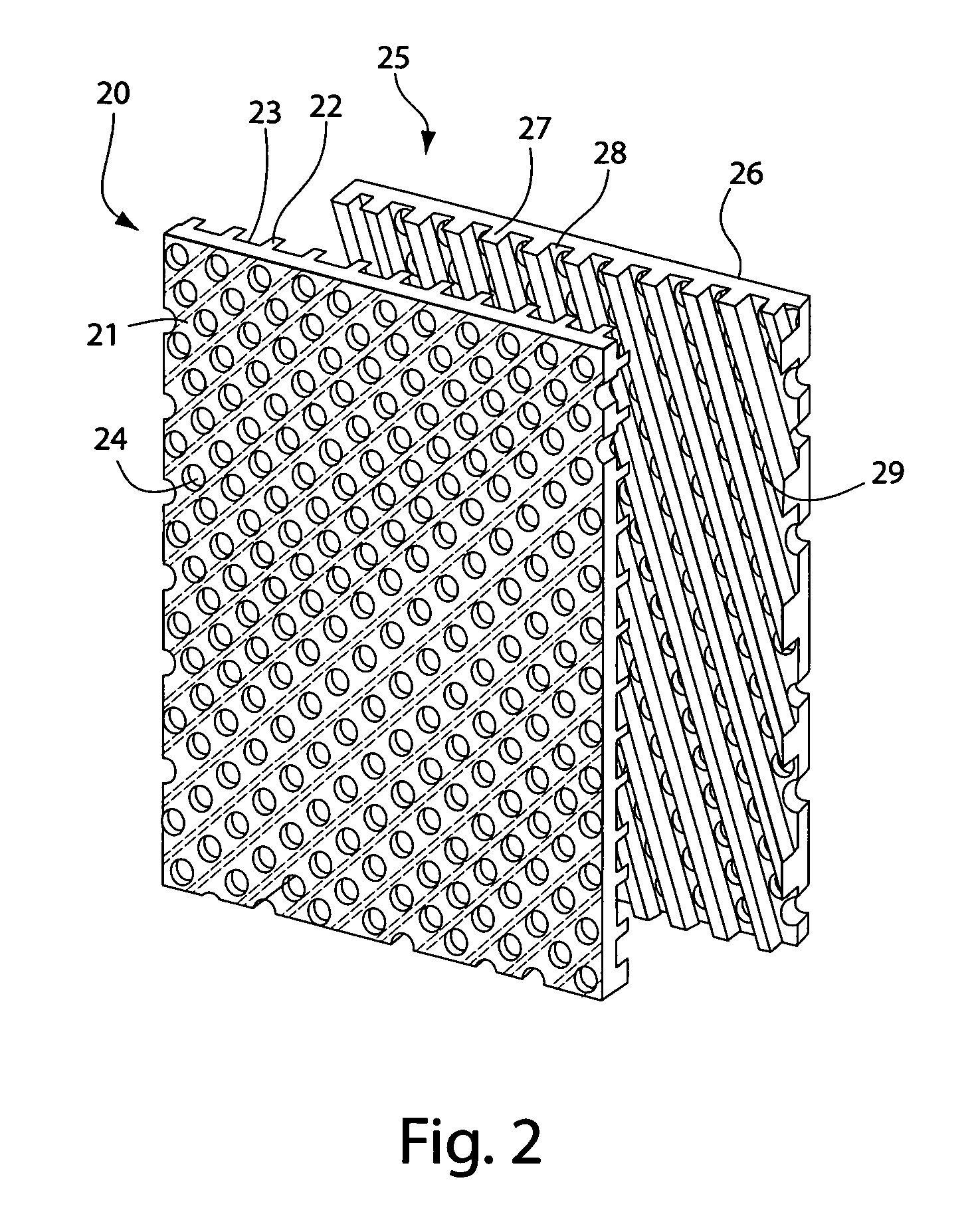Production of electrolytic water
a technology of electrolysis water and production line, which is applied in the direction of water/sewage treatment by electrochemical methods, separation processes, disinfection, etc., can solve the problems of poor electrolysis efficiency, strong odor, corrosion, etc., and achieve the effect of preventing adhesion of scale and increasing free chlorine production efficiency
- Summary
- Abstract
- Description
- Claims
- Application Information
AI Technical Summary
Benefits of technology
Problems solved by technology
Method used
Image
Examples
example 1
[0072]This example describes using the water electrolyzer shown in FIG. 3. The size of the electrolytic bath was 5 cm long, 9 cm wide, and 6 cm thick. An electrode having platinum / lithium oxide baked onto a titanium plate with an effective surface area of 50 cm2 and having many holes in it was used as the anode plate (3), and an electrode having platinum plated on a titanium plate with an effective surface area of 50 cm2 and having holes in it was used as the cathode plate (4). The nonconductive material of a fluorinated resin (Teflon®) sheet with holes was laminated on the side of each electrode plate facing the membrane. An MF film of unwoven fabric was used for membrane (1) separating the anode chamber from the intermediate chamber, and a cation exchange resin film was used for membrane (2) separating the cathode chamber from the intermediate chamber.
[0073]The rigid plates shown in FIG. 2 were used on these membranes (1) and (2), and were made of synthetic resin. The size of the ...
example 2
[0078]The same operations as Example 1 were performed using the same electrolyzer except for using an anode of platinum plated on a titanium plate instead of platinum / lithium oxide baked onto a titanium plate. Investigating the production efficiency of effective chlorine in this case gave the results shown in Table 2. From Table 2, it can be confirmed that a high content of chlorine was produced.
[0079]
TABLE 2PowerWater forWater Not forVoltageCurrentConsumptionElectrolysisElectrolysisORPFree ChlorineVAWL / minL / minpHmVppm5.88.951.6 0.031.52.8611381306.28.955.20.11.52.7411411106.48.957.00.21.52.721142105
example 3
[0080]This example describes the water electrolyzer shown in FIG. 5. An electrode having platinum / lithium oxide baked onto a titanium plate with an effective surface area of 50 cm2 and holes (diameter: 1.0 to 3.0 mm) was used as the anode electrode plate (3). Two, three, and five plates were used as anode electrode plates, and measurements were taken for each combination. When several electrodes were used, part of each of the electrode plates are in electrical contact. An electrode having platinum plated on a titanium plate with an effective surface area of 50 cm2 (square centimeters) and holes (diameter: 1.0 to 3.0 mm) was used as cathode plate (4). A cation exchange resin film was used for membrane (1) separating the anode chamber from the intermediate chamber, and an anion exchange resin film was used for membrane (2) separating the cathode chamber from the intermediate chamber. Intermediate chamber (F) was filled with an approximately 30% concentration aqueous sodium chloride so...
PUM
| Property | Measurement | Unit |
|---|---|---|
| oxidation reduction potential | aaaaa | aaaaa |
| pH | aaaaa | aaaaa |
| pH | aaaaa | aaaaa |
Abstract
Description
Claims
Application Information
 Login to View More
Login to View More - R&D
- Intellectual Property
- Life Sciences
- Materials
- Tech Scout
- Unparalleled Data Quality
- Higher Quality Content
- 60% Fewer Hallucinations
Browse by: Latest US Patents, China's latest patents, Technical Efficacy Thesaurus, Application Domain, Technology Topic, Popular Technical Reports.
© 2025 PatSnap. All rights reserved.Legal|Privacy policy|Modern Slavery Act Transparency Statement|Sitemap|About US| Contact US: help@patsnap.com



